Some users may experience temporary issues accessing parts of the site. Thanks for your patience.
- Office Hours Mon - Fri 9:00 am – 4:00 pm EST
Attendees will learn how different malocclusions develop and ways to treat and/or work with the orthodontist to encourage a more normal growth pattern to optimize sleep and overall physical and dental well being. Many of the functional concerns noted will carry over into the adult patients seen daily and will help explain how they arrived at their dental issues.
Target Audience: General Dentists, Lab Technicians, Specialists
Live Stream Date: MARCH 14, 2025
Live Stream Time: 10AM-1PM EST
Recording Access: 30 Days for single purchase
CE Credits: (must total 3hrs): 1 (180)L, 1.5 (370) L, 0.5 (750) L
Instructor:Dr. Danielle Fry
Tuition: $249
Dr. Danielle Fry graduated from University of Nevada Las Vegas School of Dental Medicine in 2011 and then entered active duty with the United States Air Force as a general dentist. After completion of an Advanced Education in General Dentistry residency, Dr. Fry completed 4 more years of military service both active and reserve as a general dentist. She pursued orthodontics at the University of Detroit Mercy graduating in 2017. Additionally, Dr. Fry completed a 1 year certificate program at the Herman Ostrow School of Dentistry at USC in Orofacial Pain in 2018. She practices orthodontics and orofacial pain dentistry in Northern Michigan in private practice.
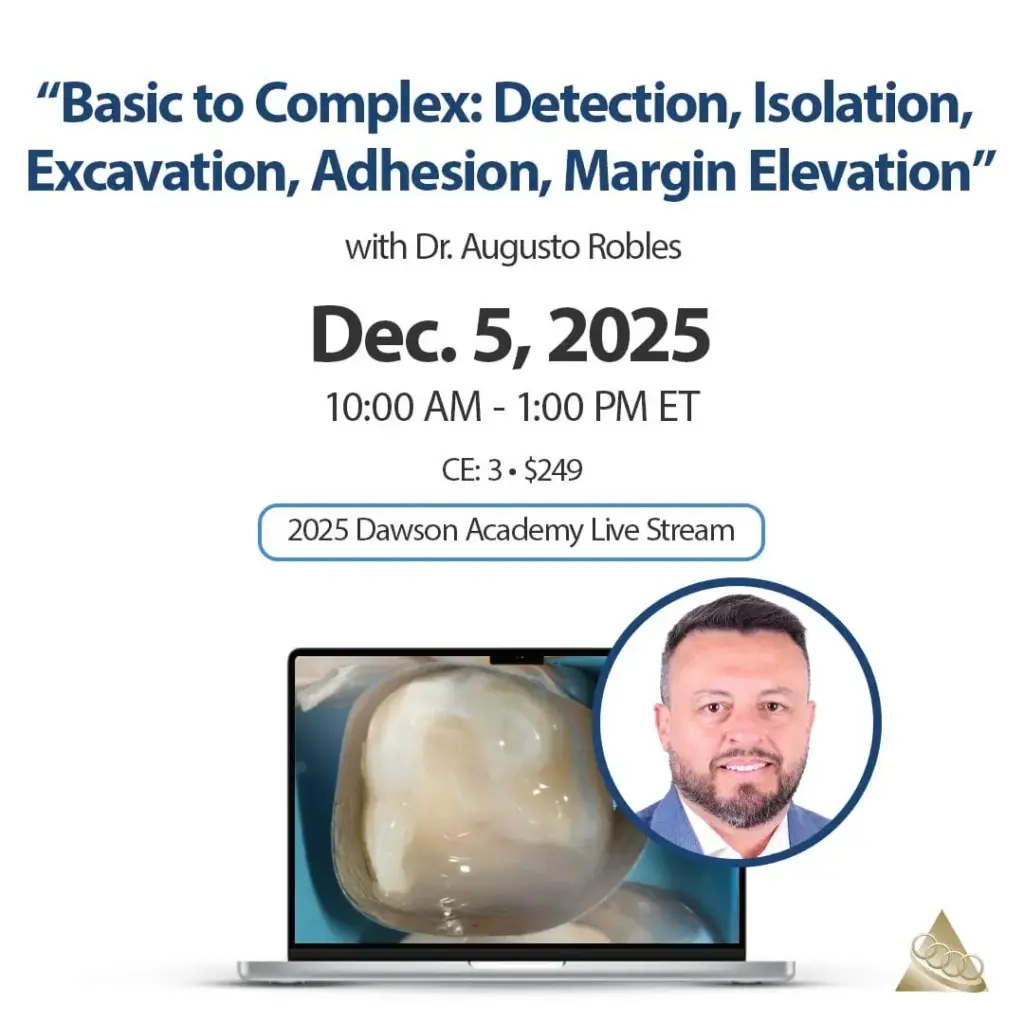

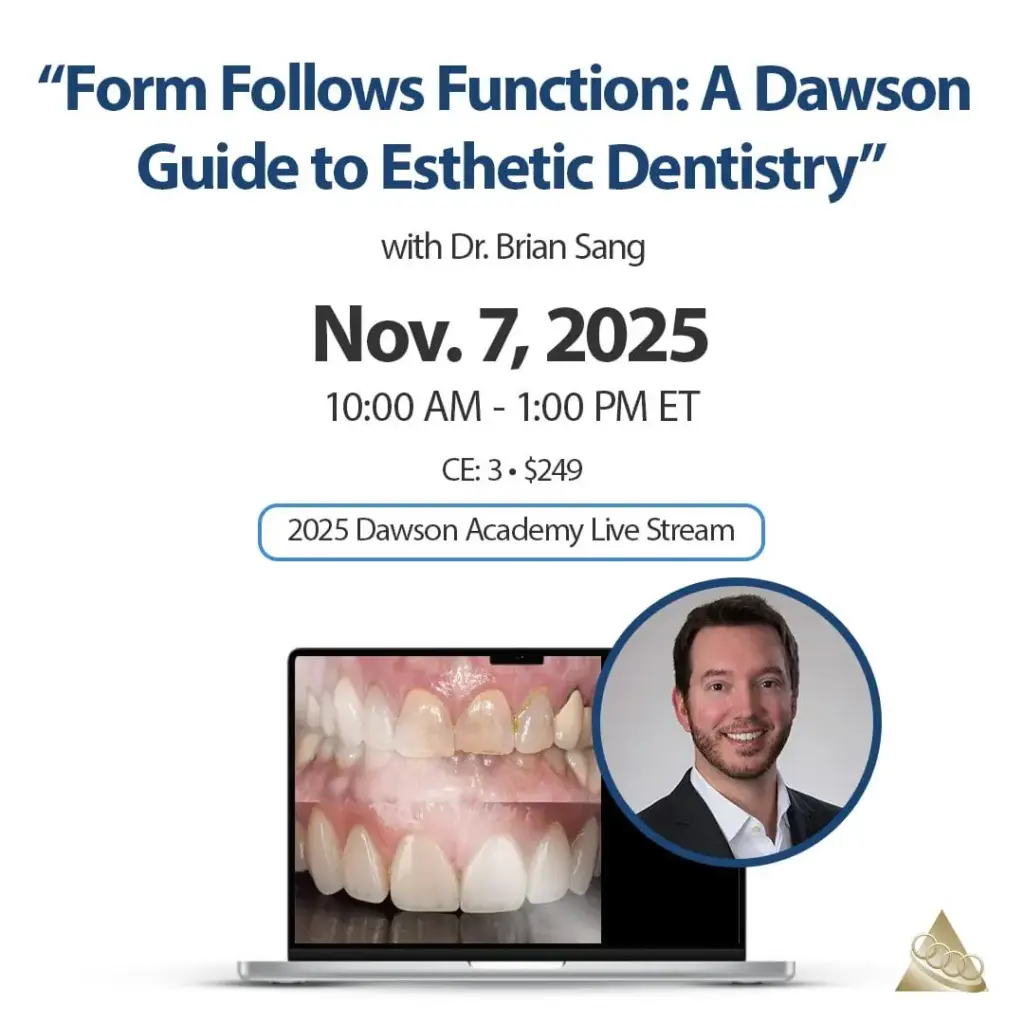
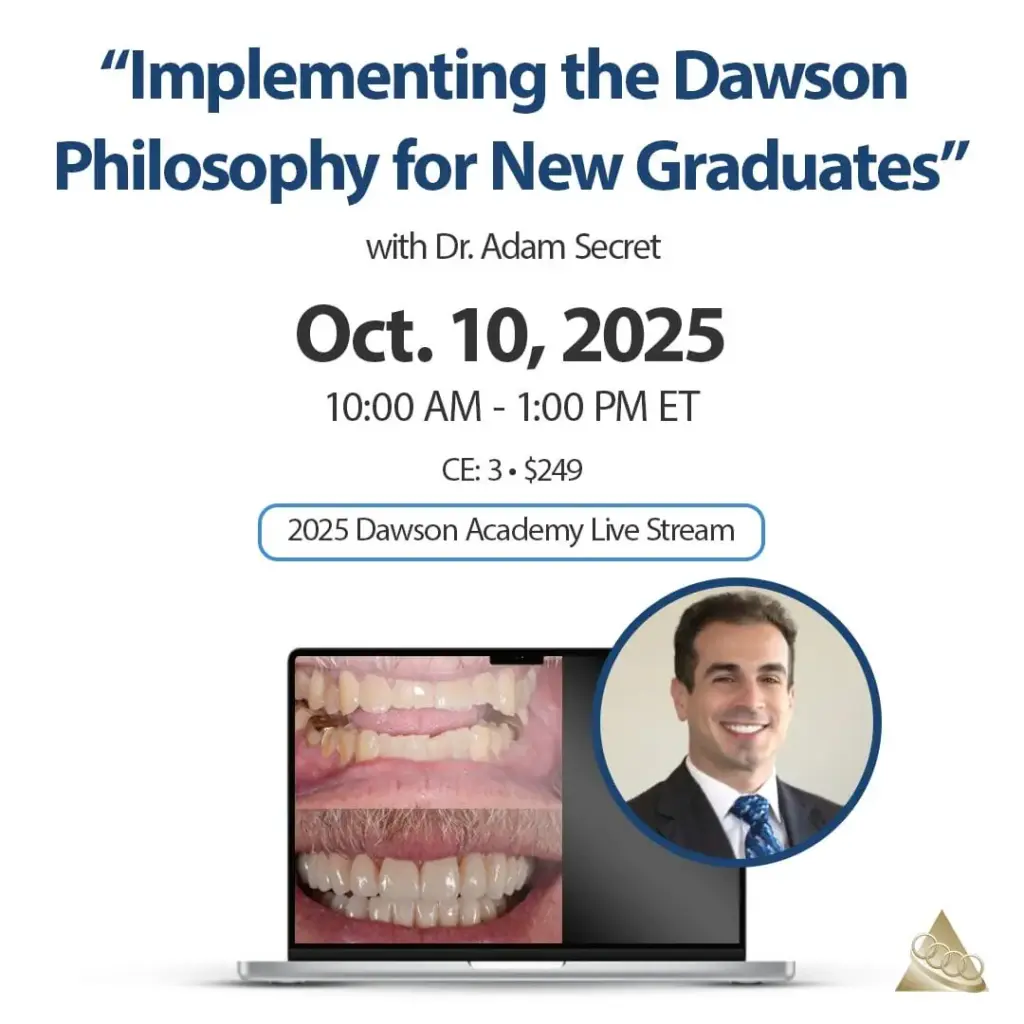
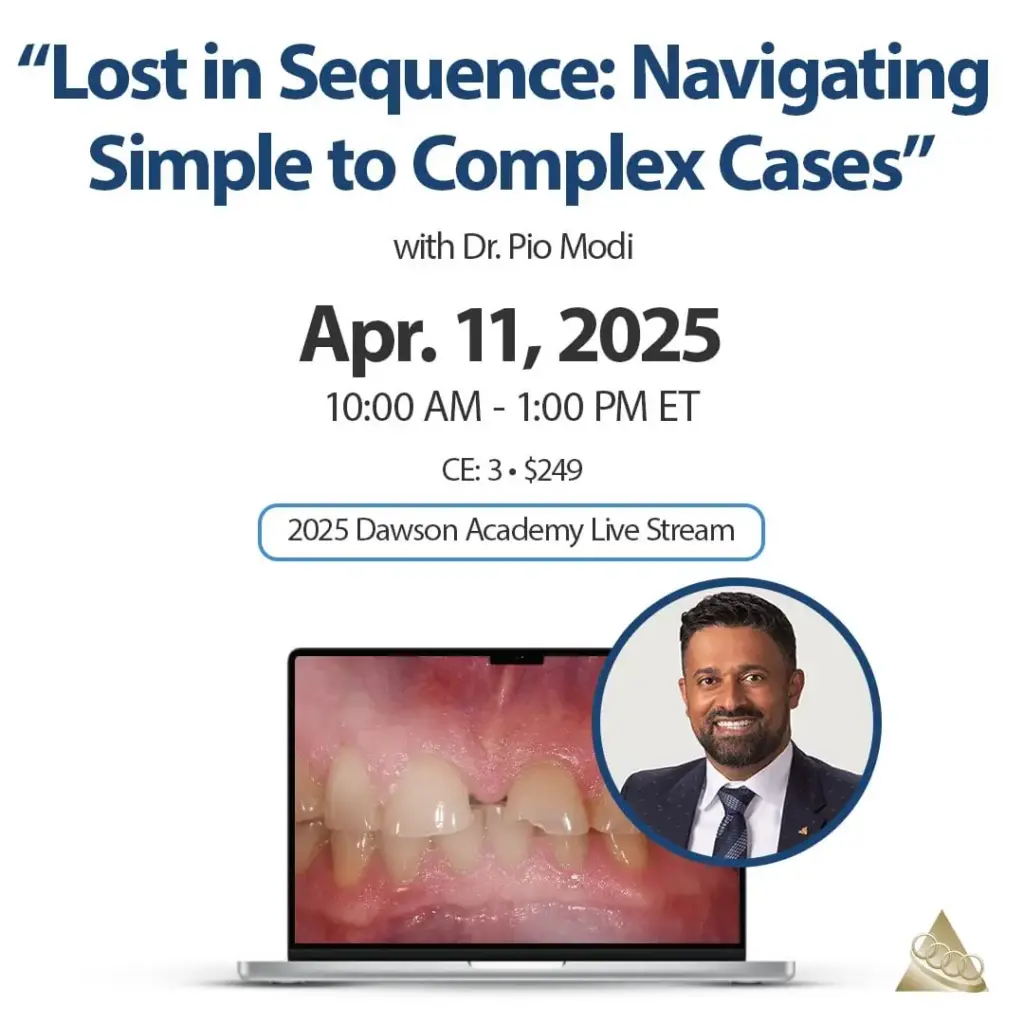




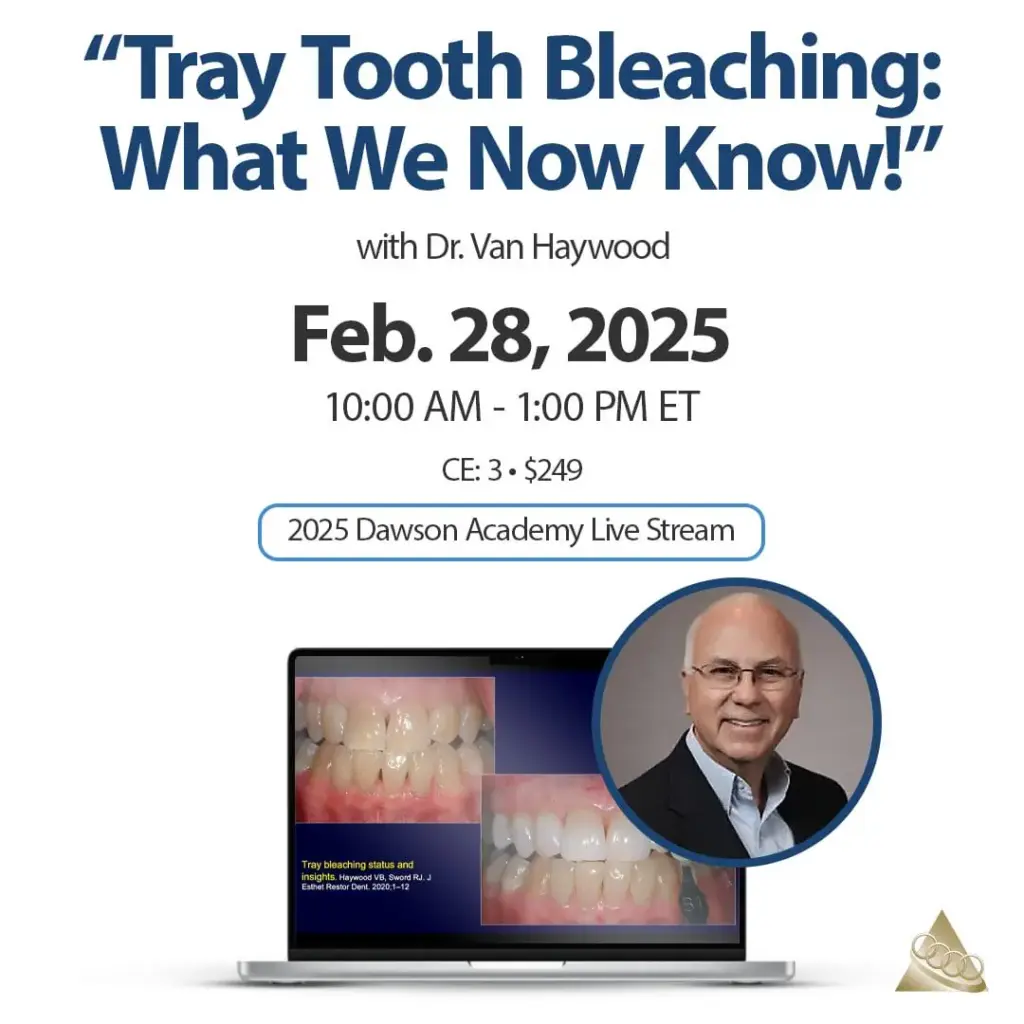

Please contact The Dawson Academy at 1.800.952.2178 for full details.

The Dawson Academy is an ADA CERP Recognized Provider. ADA CERP is a service of the American Dental Association to assist dental professionals in identifying quality providers of continuing dental education. ADA CERP does not approve or endorse individual courses or instructors, nor does it imply acceptance of credit hours by boards of dentistry. The Dawson Academy designates this activity for 4 credit hours continuing education credits.
ADA CERP is a service of the American Dental Association to assist dental professionals in identifying quality providers of continuing dental education. ADA CERP does not approve or endorse individual courses or instructors, nor does it imply acceptance of credit hours by boards of dentistry.
Concerns or complaints about a CE provider may be directed to the provider or to the Commission for Continuing Education Provider Recognition at ADA.org/CERP.